プロジェクトProjects
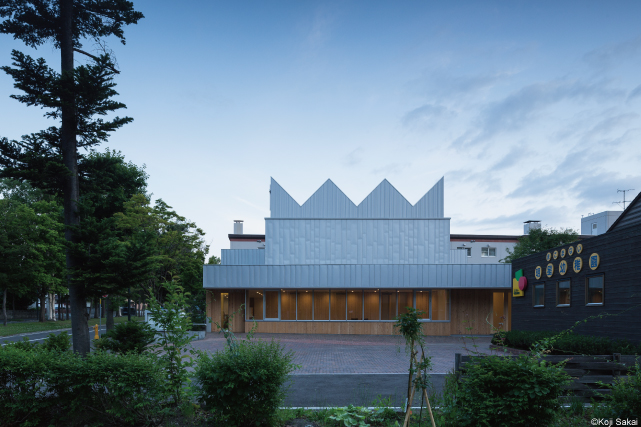
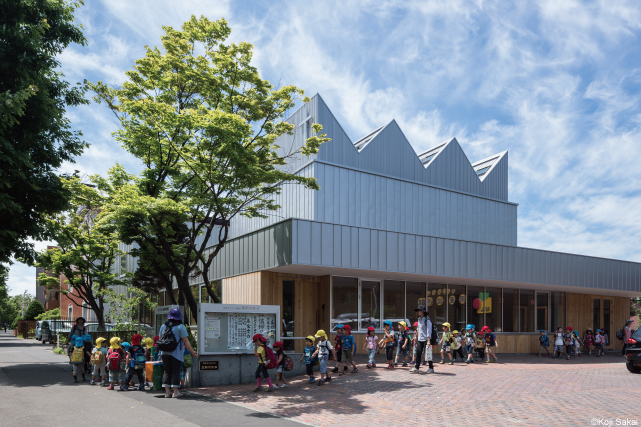
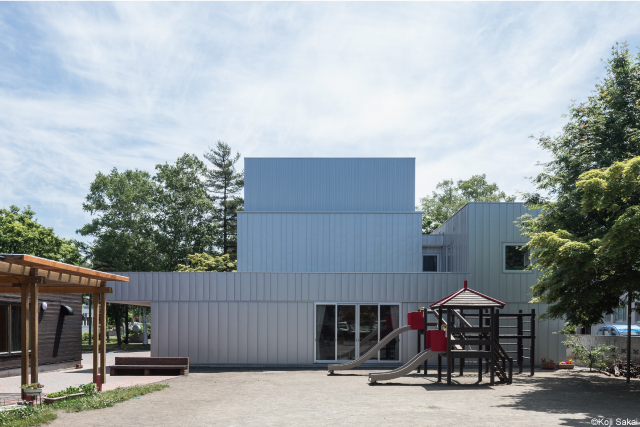
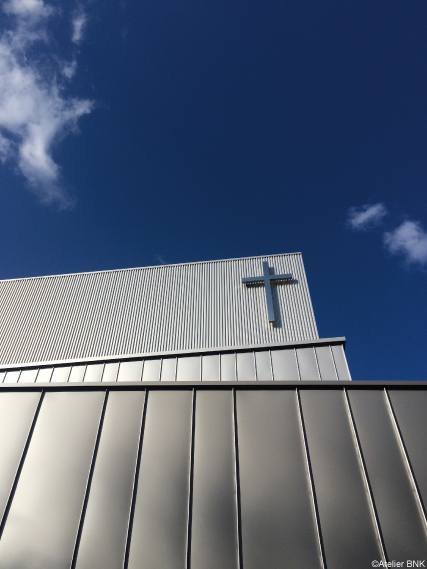
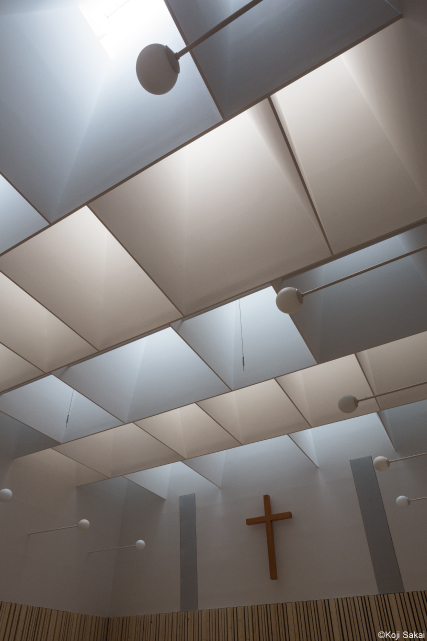
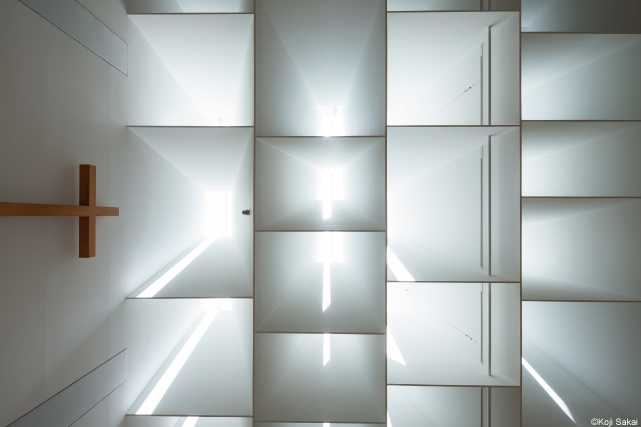
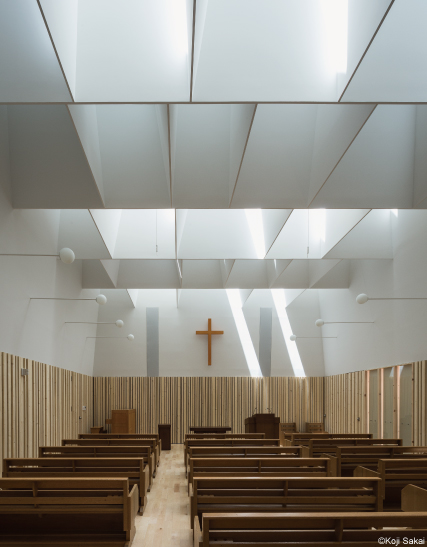
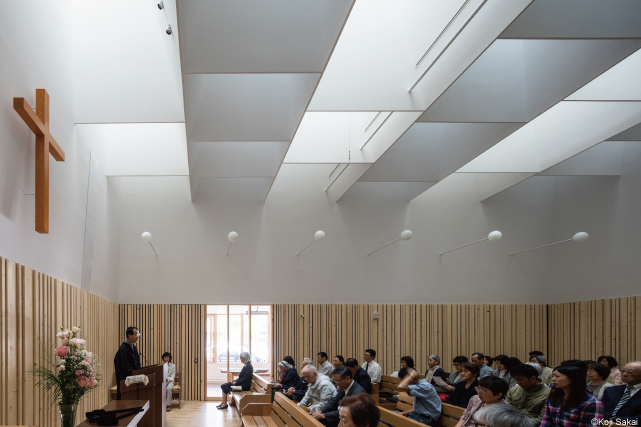
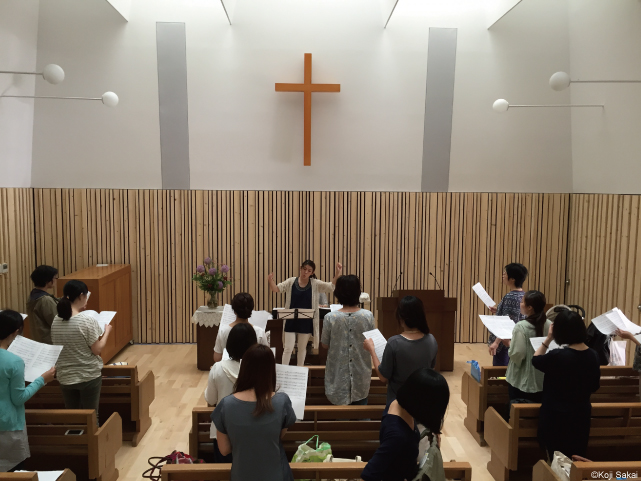
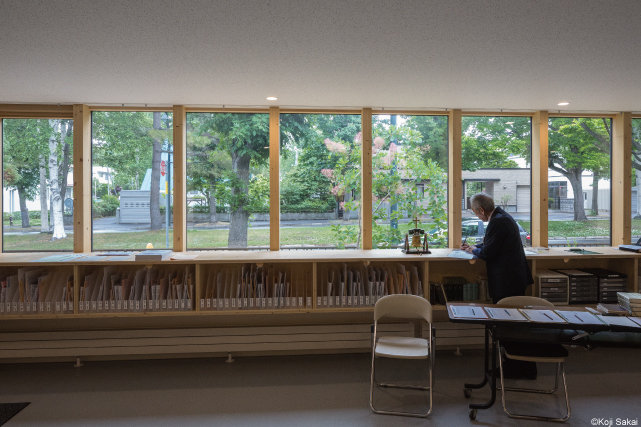
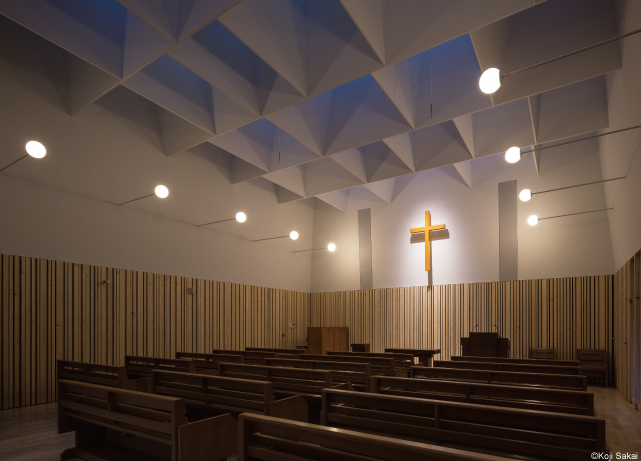
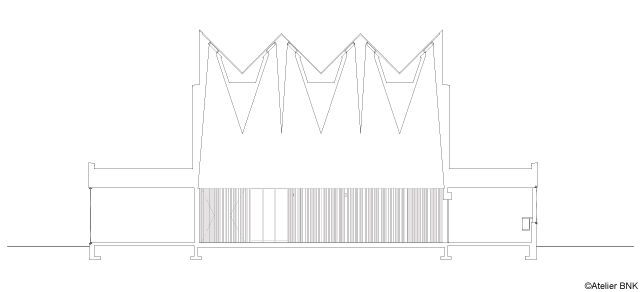
日本基督教団 真駒内教会
2014
北海道札幌市
構 造:木造
階 数:地上2階
延床面積:384㎡
都市構造研究所( 構造設計 )
アトリエブンク( 設備設計 )
創立50年を迎える教会の建て替えである。札幌郊外、オリンピック公園に近い住宅地で、緑豊かな大通に面する。教会経営の幼稚園と敷地を分けており、不整形で余地は少ない。今回計画では、元々の機能を満たし、少しでも広く、開かれた教会である事が求められた。
配置は各々独自の角度をもつ周囲の建築や境界線と平行させ、敷地の有効利用を図った。平面は教会活動を支える空間で礼拝堂を囲む形とし、その活動が垣間見えるようにして、開かれた教会を目指した。礼拝堂周辺諸室は、長方形平面の礼拝堂と周辺と連携する角度を持つ外周の間の連続空間を小空間によって分節し、機能に合わせた開口を与えてつくり、動的には展開の変化と内外の係わり方の多様性、静的には各々居心地が異なる場を作り出している。礼拝堂は1:1.2の比率の平面で、四辺同質に扱い、方向性を弱め、上からの光で満たされることを意識した。深く、様々な角度を持つ光井戸は、一年一日の大胆で繊細な光の変化を礼拝堂に届け、ふさわしい残響をもたらし、熱の緩衝帯ともなっている。
トップライト角度は雪を落とすため45°とし、積雪に十分対応する大きさの谷樋をもうけ、連続三角形を形成している。屋根面に大開口をとるための剛性要素として存在する谷樋底面と礼拝堂上部縁辺の水平面が、階構成とともにファサードの構成をもたらしている。周辺の角度を反映した平面、人々を迎える屋根から続く庇、層ごとの板金材料や締め方でその構成の印象は強化されている。
この場所の環境と合理の帰結として形がもたらされ、その存在を人々に印象づけることは、この教会をより多くの人に開いていくことに通ずる。教会の中に進めば、礼拝堂の上から満たされていく光は、時に強く、時にはかなく、分け隔てなく人々を照らす。
北海道優秀照明施設賞
北海道建築奨励賞
北海鋼機デザインアワード奨励賞
日本建築学会作品選奨
ディテール 220号
日本建築学会作品選集2018
JIA建築年鑑2017( 日本建築家協会優秀建築選100選 )
ArchDaily
Archello
United Church of Christ in Japan, Makomanai Church
2014
Sapporo, Hokkaido
Structure:W
Floor:2
Floor Area:384㎡
Urban Structural Engineers( Structural Design )
Atelier BNK( Mechanical & Electrical Engineering )
This project involved the remodeling of a church founded 50 years ago. Located in a suburb of Sapporo, the church stands in a residential area near the Olympic Memorial Park, facing a tree-lined avenue. The church runs a kindergarten, with which it shares the site. The lot is not square and has little leeway in terms of space. This remodeling plan required us to maximize the church space in order to achieve openness, while retaining the original functions of the church.
The new building was placed parallel to the buildings and borders surrounding the site maximize the area available. The chapel is surrounded by rooms, in which various activities are held, and the rooms can be seen through the openings, rendering a sense of openness to the church. The rooms around the chapel are made by dividing up the area formed between the rectangular-shaped chapel and the outer walls. These rooms are furnished with openings according to the function of the room, making each area distinct in relation to its surroundings while providing each room with unique “feel”. In the chapel area, which forms a 1:1.2 ratio plane, all four sides are treated equally without emphasizing any wall or any direction. The chapel is designed to be filled with light from above. Through the deep light wells set at various angles, the chapel is lit by sunlight as it changes angle day by day throughout the year. The light wells also help produce echoes and serve as a buffer zone for heat.
The angle of the top light is set at 45 degrees in order to let the snow slide from the roof. The valley gutters, forming a series of triangles, are large enough to accommodate substantial snowfalls. The bottom of the valley gutters, which exist to provide structural rigidity and enable the large openings in the roof, and the level surface at the top of the chapel form the facade, along with the layered stories. The impression given by the facade is reinforced by the planes in harmony with the surroundings, by the eaves that greets visitors, and by the sheet metal work on each of the layers.
The church embodies the rationality of the environment surrounding this particular place and aims to make an impression by its very existence, leading greater openness to a greater number of people. As you move into the church, the light from above the chapel, sometimes strong, sometimes soft, shines evenly on every person.
Hokkaido Excellent Lighting Building Award
Hokkaido Architecture Award, Encouragement Prize
Hokkai Koki Design Award Encouraging Prize
Annual Architectural Design Commendation 2018 of the Architectural Institute of Japan
Detail No.220
2018 Selected Architectural Designs of the Architectural Institute of Japan
Japan Architecture of the Year 2017 selected by the JIA
ArchDaily
Archello
